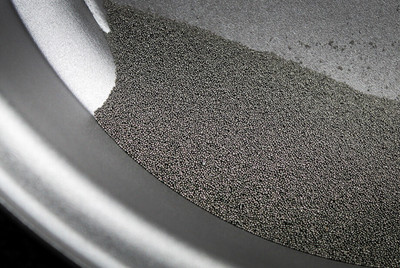9th Oct 2024
When it comes to coating and painting processes, transfer efficiency refers to the measure of how much paint makes it from the container onto the surface being painted. It’s a critical factor in achieving the proper dry film thickness using as little coating material as possible. Transfer efficiency directly affects product quality, cost-effectiveness, and environmental impact. So, what is transfer efficiency, and why does it matter? Let’s break it down.
What is transfer efficiency?
Transfer efficiency is a measure of how much of the applied material (such as paint or another coating) actually reaches the intended surface. It’s essentially a ratio of the amount of paint or coating sprayed versus the amount that ends up on the surface. For instance, if you’re using a spray gun, not all the paint will stick to the object being coated—some may evaporate, drip, or be lost in overspray.
This concept becomes even more important when considering dry film thickness—the desired thickness of a coating once it has dried. The more efficient the transfer, the less material you need to use to achieve the required thickness.
Why is transfer efficiency important?
Transfer efficiency matters because it directly impacts the cost, quality, and environmental footprint of the coating process. Higher transfer efficiency means:
- Less paint or coating material is wasted, saving you money.
- Reduced overspray leads to less pollution and waste disposal, making your process eco-friendlier.
- Efficient material use ensures consistent coverage and thickness, improving the final product’s quality and durability.
What factors affect transfer efficiency?
Many factors influence transfer efficiency. Two major considerations are the type of coating material and the application method. Different paints, powders, and other coating materials have varying viscosities and properties, which can affect how easily they adhere to a surface.
The method you use for applying the coating also plays a huge role. For example:
- Spray guns: The angle, distance, and type of spray gun all affect how much material is wasted versus applied to the surface.
- Brushes and rollers: These have higher transfer efficiencies compared to spraying but may not be as practical for large or complex surfaces.
What are the common inefficiencies in transfer processes?
Some of the common inefficiencies in transfer processes include overspray, paint waste due to improper equipment settings, and the loss of material due to evaporation or dripping. For example:
- In spray painting, paint can miss the target surface and fall onto the floor or get carried away by air currents.
- If the coating is applied too thickly, excess material can slide off the surface.
- Some of the solvent in coatings can evaporate before it hits the surface, especially in high-temperature environments.
What methods or technologies can improve transfer efficiency?
Improving transfer efficiency often starts with selecting the right equipment and application method. Here are some key strategies:
- Adjusting pressure, spray distance, and angles can greatly reduce material waste.
- Selecting a material that adheres well to the surface, and has the right viscosity, can help improve efficiency.
- Skilled workers can apply coatings more accurately and with less waste, ensuring better overall transfer efficiency.
What are the potential benefits of improving transfer efficiency?
Improving transfer efficiency offers several benefits, including:
- Less wasted material means more savings.
- Achieving the correct dry film thickness ensures optimal product performance and durability.
- Less waste and fewer emissions contribute to sustainability goals.
- The process becomes faster and more consistent when material waste is minimised.
What challenges are involved in improving transfer efficiency?
While improving transfer efficiency offers clear benefits, challenges can arise, particularly when it comes to adopting new technologies and processes. One of the key hurdles is ensuring that staff are properly trained in the use of advanced equipment. This is where companies like Airblast Eurospray come in. We are not only able to provide high-quality spraying equipment and advise which would be best for your operations, but we can also offer comprehensive training with it to help operators use our equipment correctly and maximise efficiency. To see more about this, click here.
Conclusion
Transfer efficiency is a vital aspect of the coating process that can significantly impact both operational costs and environmental sustainability. By understanding the factors that influence it—such as coating material, application methods, and equipment settings—you can take proactive steps to enhance efficiency.




